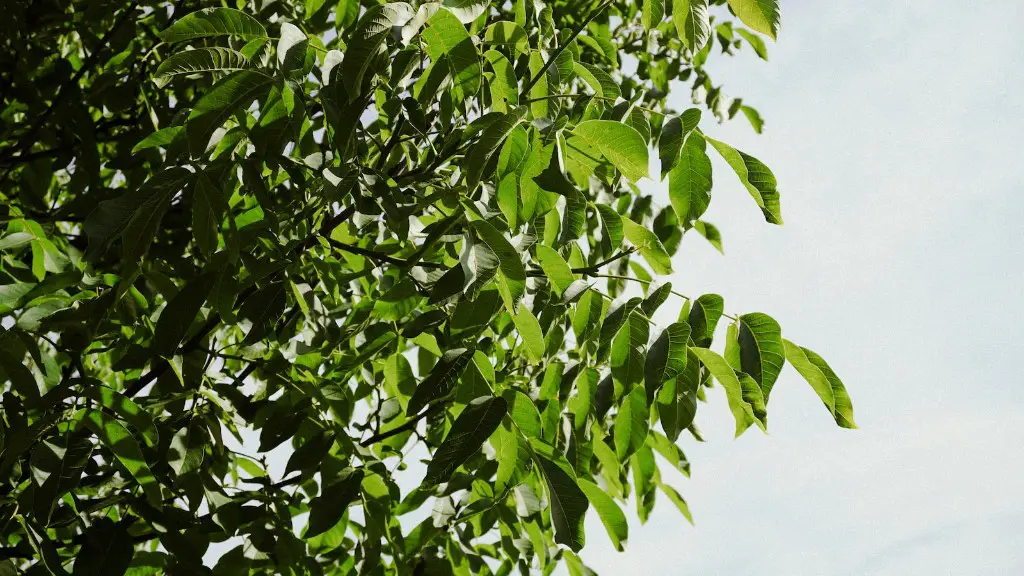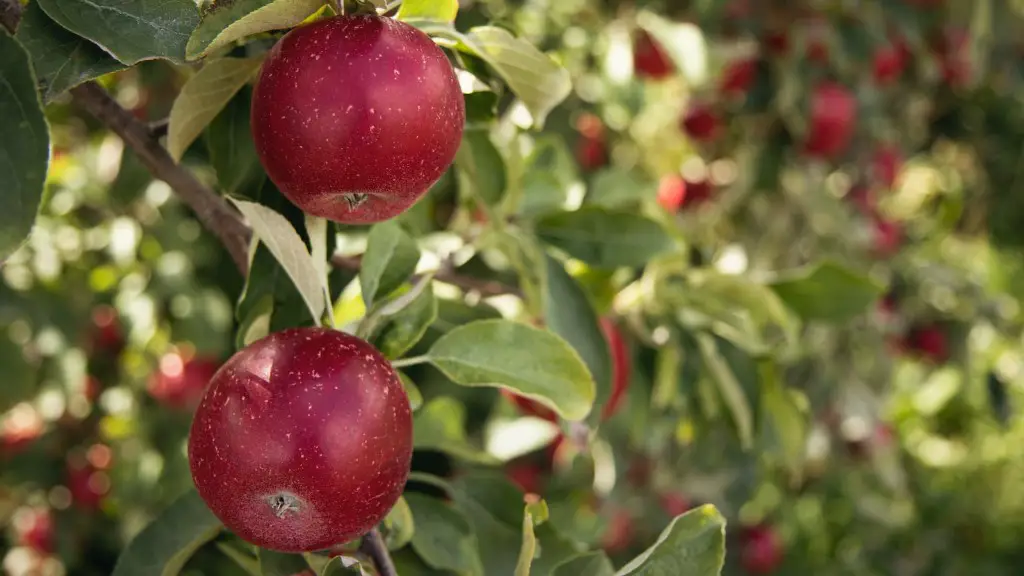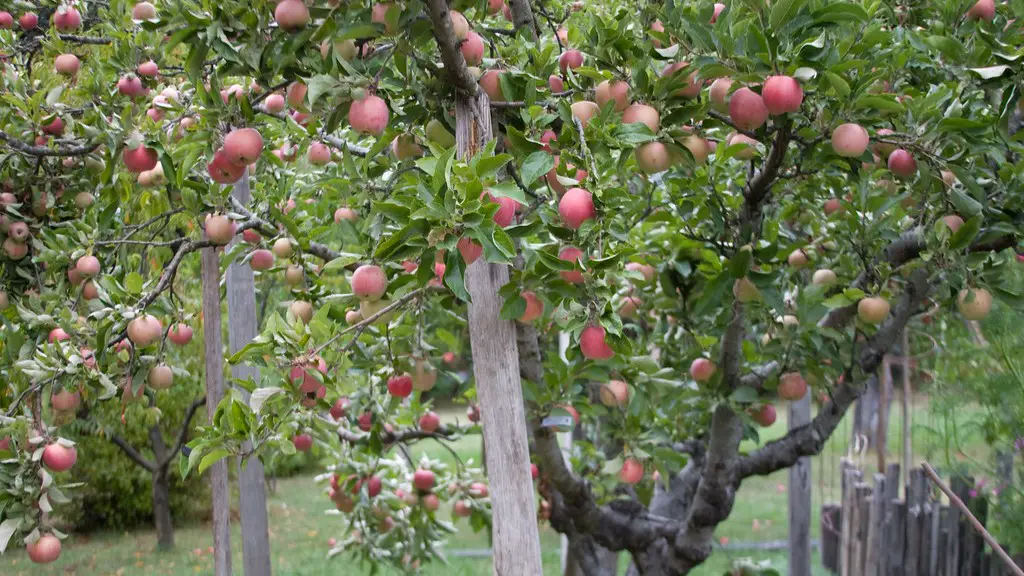Nutrients and Fertilizer
An avocado tree is a large, spreading tree that needs enough nutrients and water to produce high yielding fruit. As with all fruit trees, the key to successful cultivation is providing the plant with the right amount of fertilizer. This is especially true of avocados, whose nutrient needs are higher than most other fruit trees. To ensure your tree lives a long and productive life, regular nutrients must be applied in the form of fertilizer.
For an avocado tree, it is especially important to use a fertilizer high in nitrogen, phosphorus and potassium. These three elements are key to creating strong, healthy growth, and ensure your tree gets the nourishment it needs for abundant fruit. Generally, the best fertilizer for an avocado tree will contain a ratio of nitrogen, phosphorus and potassium of something close to 4:3:3. It’s also a good idea to use a fertilizer with small amounts of calcium and sulfur, as these elements help promote the growth of healthy leaves and flowers.
Organic fertilizers are an excellent choice, as they are natural and promote healthy growth without overloading the tree with excessive nutrients. Furthermore, organic fertilizers tend to break down slowly and last longer, meaning that you won’t have to apply them as often. Compost, manure and compost tea are all excellent organic options for avocado trees.
How to Fertilize an Avocado Tree
Fertilizing your avocado tree should be done in the spring, just as the tree is starting to grow again in the warmer weather. A second dose can be applied during the summer and a third in the late fall – just before the cold weather sets in. When applying the fertilizer, it’s best to start at the base of the tree and work your way outwards in a circle around the tree. This will ensure an even distribution of the nutrient-rich fertilizer.
It’s important to note that an avocado tree requires more fertilizer than most other fruit trees. This is because they are large and grow quickly, so they need a consistent supply of nutrients to remain healthy. The amount of fertilizer required will depend on the age and size of the tree, but it’s generally recommended that a healthy adult tree receives 2-3 pounds of fertilizer per year. More fertilizer may be required if the tree is younger or if it has been under-fertilized in the past.
When applying the fertilizer, it’s important to keep it away from the trunk and roots of the tree. This will ensure that the fertilizer is evenly distributed and that it does not burn the tree’s roots or trunk. Once the fertilizer is applied, it should be watered in thoroughly to ensure the nutrients reach the soil and can be absorbed by the tree.
Tips for Fertilizing an Avocado Tree
When fertilizing an avocado tree, it’s important to keep a few things in mind. First, it is essential to use the right fertilizer for the age and size of your tree. Over-fertilizing can stunt the growth of your tree, so it’s important to stick to the recommended amount of fertilizer. Secondly, it’s a good idea to use a soil testing kit before fertilizing. This will help you determine what type of fertilizer your soil needs and how much to apply.
Finally, it’s important to water the fertilizer in thoroughly. This will ensure that the nutrients reach the soil and can be absorbed by the tree. Watering should be done at least twice a week in warmer months and less in cooler months, as the tree will not require as much water during colder times of year.
Giving Your Tree the Best Care
Fertilizing an avocado tree can seem like a daunting task, but with a little bit of care and attention, you can ensure your tree gets the nutrients it needs for a long and productive life. Follow the tips outlined above and stick to the recommended amounts of fertilizer, and your tree will be sure to produce lush and abundant fruit for years to come.
Pest Management
Avocado trees can be susceptible to a variety of pests, including aphids, mites, caterpillars and thrips. These insects can damage the tree and reduce its yield, so it’s important to monitor the tree regularly and take steps to protect it from infestations. A few simple measures, such as insecticidal sprays and pruning can help protect your tree from pests and help promote healthy growth.
It’s also important to keep the area around the tree clear of debris and weeds, as these can provide a habitat for pests. Keeping the soil well aerated and mulched will also help keep pests away and promote moist, fertile soil ideal for avocado trees.
Weed Control
Weeds can become a problem for avocado trees, as they compete with the tree for space, water and nutrients. To keep weeds away from an avocado tree, it’s important to practice good weed control methods. Pulling or hoeing weeds regularly will help keep them in check and prevent them from taking over. Additionally, applying a pre-emergent herbicide at the beginning of the growing season can help prevent weed and grass seeds from germinating and taking hold.
Mulching is also an effective way to keep weeds away, as it creates a barrier between the soil and unwanted vegetation. Using organic mulches such as straw, grass clippings or compost will help create a more hospitable environment for your tree, as well as helping to keep weeds at bay.
Pruning and Maintenance
Pruning is an important part of caring for an avocado tree, as it helps to maintain its shape and promote healthy growth. Dead or damaged branches should be pruned away regularly, as well as any branches that are growing in an unnatural direction. Pruning also helps to promote air circulation throughout the tree, which can help ward off pests and diseases.
It’s also important to keep the tree’s roots healthy, as this can help promote vigorous growth. Mulching around the base of the tree will help keep the roots cool and moist, while helping to keep weeds down. Fertilizing the soil around the base of the tree, as well as the entire root zone, can also help to ensure your tree receives the nutrients it needs to thrive.
Harvesting Avocados
Harvesting an avocado is a task that requires patience and skill. Unlike other fruits, avocados need time to ripen and reach their peak flavor. Generally, avocados are ready for harvesting after about 8-10 months. It’s important to wait until the skin has turned from green to a dark, glossy black, indicating that the fruit is ripe and ready for harvesting.
When harvesting an avocado, it’s important to do so carefully and gently. Avocados are fragile and can be easily damaged. Gently grasp the stem and twist the fruit off the branch. If the stem doesn’t give way easily, leave the fruit to ripen a little longer. Once harvested, the fruit can be stored in a cool, dark place for up to a week.
Conclusion
Fertilizing and caring for an avocado tree requires a bit of effort, but the rewards can be plentiful. By following the tips outlined above, you can ensure your tree receives the nutrients it needs and produces plenty of delicious fruit. With a little bit of care and attention, your avocado tree can live a long and productive life and provide you with a bounty of vitamin-rich avocados for years to come.


